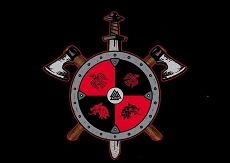Odin’s Henchmen is a modern religious community that aligns itself with the revival of ancient Norse paganism, often referred to as Heathenry or Asatru. This community, like others within the broader neo-pagan and Heathen movements, seeks to reconstruct and practice the pre-Christian religions of the Norse and Germanic peoples. Here’s an overview of Odin’s Henchmen and the pagan lifestyle they embrace:
Odin’s Henchmen
Origins and Beliefs:
- Odin’s Henchmen are part of the broader revivalist movement known as Heathenry or Asatru, which aims to restore the religious traditions of the Norse and Germanic tribes.
- The group draws inspiration from Norse mythology, honoring gods such as Odin, Thor, Freyja, and others.
Practices:
- Blót: Ritual sacrifices or offerings to the gods, land spirits (landvættir), and ancestors. These can range from simple offerings of food and drink to more elaborate ceremonies.
- Sumbel: A communal drinking ritual involving toasts and oaths made to gods, ancestors, and heroes.
- Seasonal Celebrations: Observance of traditional Norse festivals such as Yule (winter solstice), Ostara (spring equinox), Midsummer, and others.
Community and Organization:
- Odin’s Henchmen often organize in small, tight-knit groups called kindreds or hearths, which gather for worship, feasting, and mutual support.
- They emphasize the values of honor, courage, and loyalty, mirroring the virtues esteemed in Norse sagas.
Pagan Lifestyle
Reconnection with Nature:
- Many modern pagans prioritize living in harmony with nature, engaging in activities like gardening, foraging, and wilderness skills.
- Environmental stewardship is often a key value, reflecting the pagan belief in the sanctity of the natural world.
Ritual and Ceremony:
- Daily life for many pagans includes rituals that mark the cycles of the moon (Esbats) and the sun (Sabbats).
- Personal rituals, such as meditations, prayers, or simple acts of offering, are common.
Cultural and Ancestral Reverence:
- Modern pagans frequently look to historical texts, archaeological findings, and folklore to inform their practices.
- Ancestral veneration is central, with many pagans maintaining altars or shrines dedicated to their forebears.
Community and Craft:
- Craftsmanship and artistic expression are highly valued, with activities such as rune carving, weaving, and metalworking being popular.
- Festivals, gatherings, and fairs provide opportunities for pagans to come together, share knowledge, and celebrate their spirituality.
Personal Development:
- The pagan path often emphasizes self-improvement, spiritual growth, and the pursuit of wisdom.
- Practices such as meditation, divination (using runes or other methods), and studying ancient texts are common.
